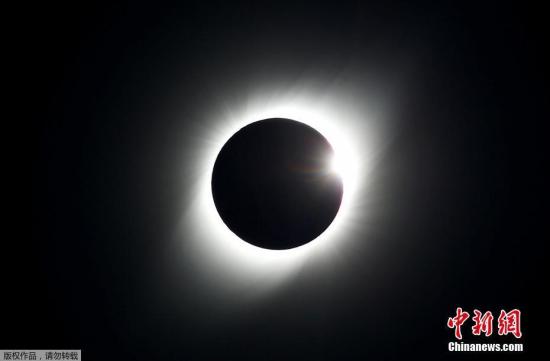China News Service, December 8th. According to the British Broadcasting Corporation (BBC), in the last month of 2020, a series of astronomical wonders will "ignite" the night sky, and people can not only see spectacular meteor showers, total solar eclipses, but also Saturn. A rare phenomenon of conjunction with Jupiter.
Data map: In the early morning of December 14, 2018, in the Usut (over water) Yadan Geopark in Dachaidan, Qinghai Province, more than 200 meteors struck the night sky and staged a stunning Gemini meteor shower.
Photo by Wang Junfeng
December 13-14: Gemini meteor shower
Observation locations: all corners of the world
According to reports, this Gemini meteor shower is called the "king of meteor showers" and can be seen in every corner of the world.
Skelton, an astronomer at the Royal Observatory in Greenwich, UK, said that this Gemini meteor shower was left by an asteroid named 3200 (3200 Phaeton).
Skelton said that every year when the earth passes through this area full of space debris, we will see a rich night sky meteor shower.
From the 13th to the 14th, it reached its peak.
By then, as many as 150 meteors will appear every hour.
Skelton said that the speed of the meteor shower can reach 35 kilometers per second, which is equivalent to nearly 13 kilometers per hour.
She also added that as the meteor shower burns, people will still see a yellow and occasionally green or blue night sky.
The darker the sky, the better the chance of observing meteor showers. Even in slightly polluted urban areas, some meteor showers can be seen.
This meteor shower coincides with the new moon, so the timing of observation is better (the sky is too bright when the full moon is not good for observation).
Data map: Total solar eclipse phenomenon.
December 14: Total Solar Eclipse
Observation locations: Chile, Argentina
Tania of the Royal Observatory in Greenwich explained that during the 24 minutes that the moon crossed the surface of the sun, only 2 minutes and 9.6 seconds completely covered the sun.
Although the moon is 400 times smaller than the sun, it looks much larger because it is closer to the earth, so it can obscure the sun's disk and form a total solar eclipse.
This astronomical phenomenon that the moon obscures the sky and the sun will shroud South America at noon under a dark curtain and can be observed in Chile and Argentina in South America.
Tania said that the next total solar eclipse will occur in December 2021, in Antarctica.
Data map: An image of Jupiter taken by the Juno probe released by NASA.
Image source: Visual China
December 21: Jupiter and Saturn conjunct
Observation location: Global
The so-called conjunction of Saturn and Jupiter refers to the moment when two celestial bodies are closest to each other in the night sky of the earth, giving a illusion of overlapping each other and shining together.
This phenomenon will appear in the direction of the southwest horizon on the evening of December 21, at a lower position.
The time is half an hour after sunset.
Although Saturn conjunct Jupiter occurs on average every 19.6 years, this conjunction is very special because it is the closest since the 17th century.
The last time such a close encounter was 397 years ago.
Bloomer, an astronomer at the Royal Observatory in Greenwich, said Jupiter and Saturn may be the best observation planets for astronomers because they are bright and dazzling.
Bloomer said that if you have a telescope, you can even see the four major moons around Jupiter.
If the sky is clear, people will easily see this phenomenon, but still have to make some necessary preparations, because there is only one hour of observation window.

